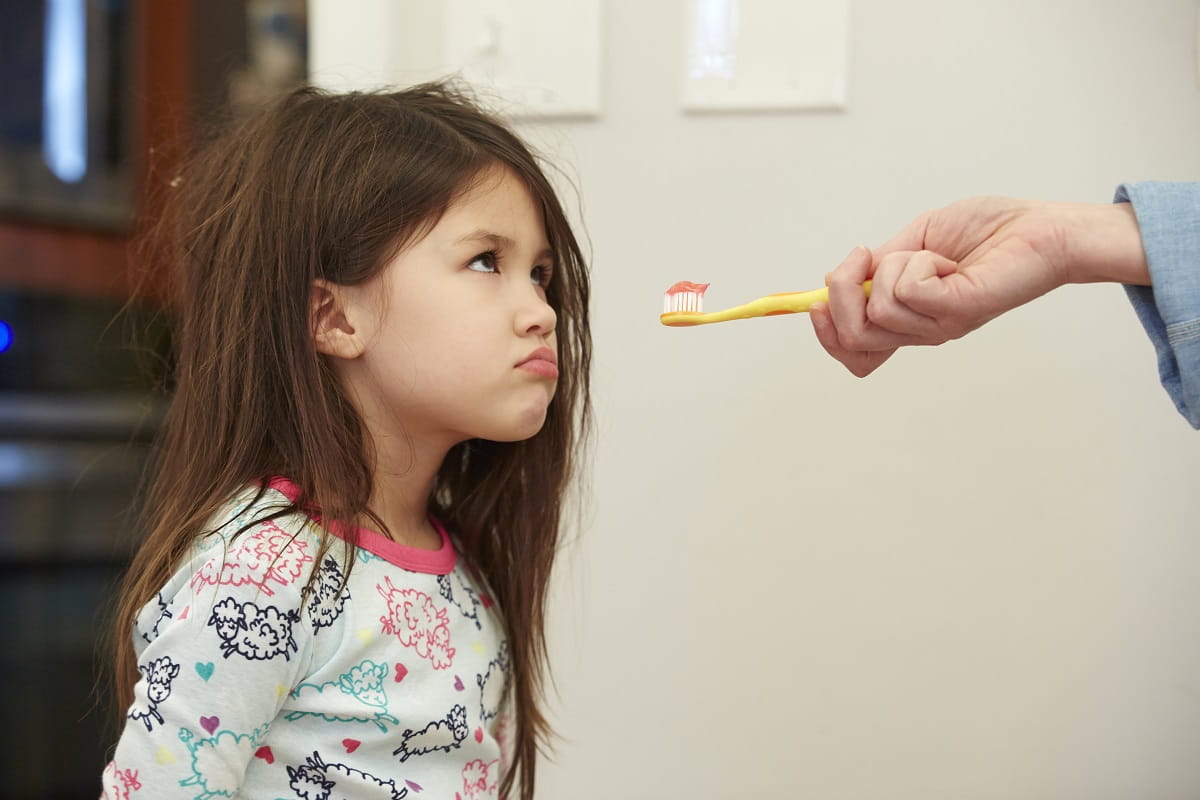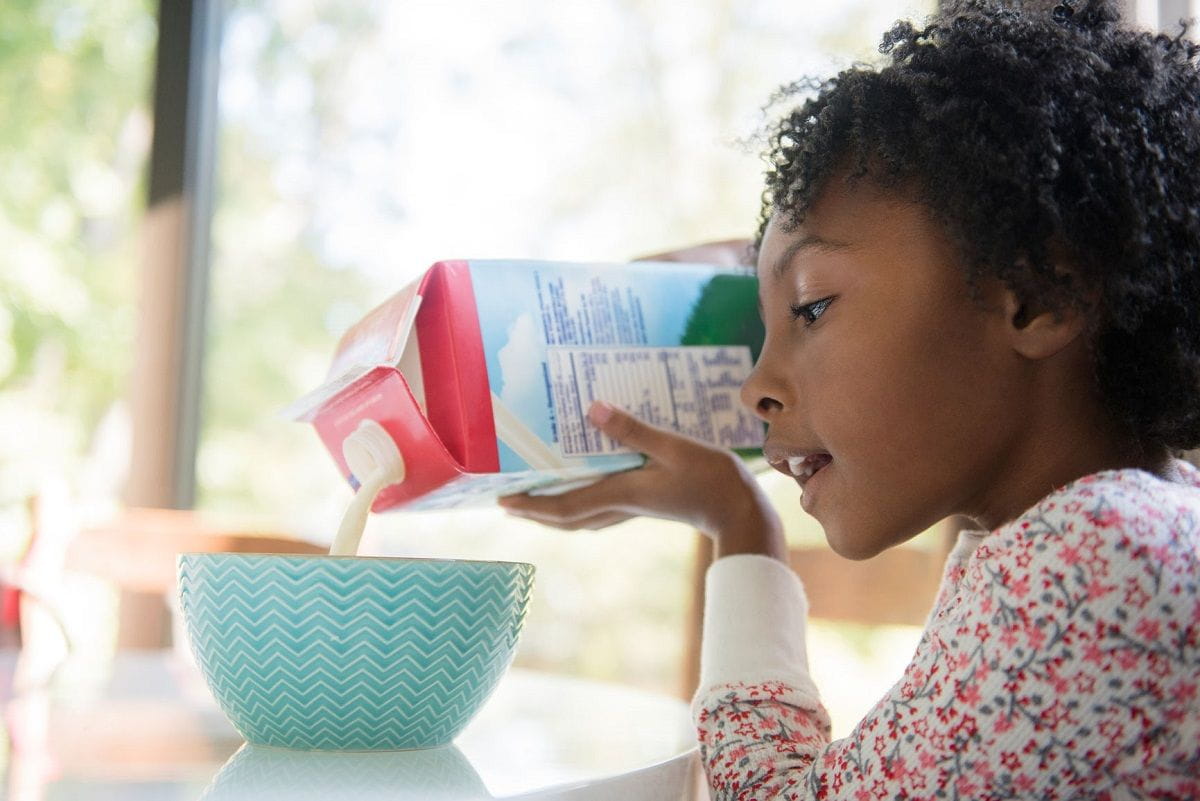Rise & Shine! Establishing a Stress-Free Morning Routine with Kids

By Ann DeWitt and Kim DeMarchi
One of the things my parent clients regularly struggle with is getting their family’s morning routine to a good place. We’ve all been there. In an effort to get our kids and ourselves out the door by 8:00 a.m., we find ourselves arguing with our children or issuing a cascade of commands: Get up. Hurry up. Get dressed. Brush your teeth. Hurry up. Get your shoes on. Hurry up. Hurry up. Hurry up…and have a great day!
Imagine starting a new job. Your boss walks in to your office and begins the morning with: Don’t be late. Wear business attire. You only have a half hour for lunch, so eat fast. Hurry up, hurry up, hurry up…and have a great day!
Would you feel empowered and motivated? Probably not. Our children are no different.
Small children have just started this new job of “being a human.” When we’re in the thick of it with our daily routines, it can be hard to notice when we’re issuing a series of “do-this, do-that” statements.
Mornings don’t have to be like this. Want to know how to stop arguing with your child during the stressful morning zone? Here are my six favorite methods for helping you and your child get out the door:
1. Establish Routines
As a parent, you know the importance of routines for toddlers and children. A great tool to help maintain a routine is a morning-routine poster or chart. They’re used in preschools with a pretty good success rate, so why not try it at home?
Here’s how to do it: Hang up a poster or a chart showing the tasks that need to be done in the morning. For example, draw or take photos of a toothbrush, shoes, backpack, breakfast, etc., and glue to felt or heavy weight paper. Use laundry pins, butterfly clips, or stickers (you get the idea) and have your child move them from a “To-Do” column to a “Done” column as they finish each task. Or just simply have a poster with pictures of the morning to-dos—whatever works for you.
Want your child to be more cooperative? Have them come up with the list themselves! The more input children have when solving a problem, the higher the success rate and the more cooperation you gain.
2. Don’t Yell from the Other Room
Don’t you love it when your child yells, “Mooommmyy” at the top of their lungs from the other room? We’re betting you don’t. Odds are, they don’t like hearing you yell from another room either. (And if you’re after compliance, the yelling-from-afar method likely won’t work.)
When you need to express firm needs to your kids, one of the clearest ways to get your message across is to get down on their level. (Literally.) Next time you need them to really hear you, resist the urge to yell. Instead, walk over to where your child is, kneel down to their level, and use a “low and slow” tone of voice to let them know that it’s time to put their shoes on. The goal is not to express anger, but rather firm expectations.

3. Rephrase Statements as Questions
Instead of “Get your shoes on,” try, “What do you need to put on before we go outside?”
Instead of “Brush your teeth,” try, “What needs to happen since you just ate breakfast and you’re off to school?”
Getting kids to think for themselves is half the battle, and questions are a great alternative to orders! When you phrase the command as a question, it makes children feel more in control of the situation because it requires their input to figure out what comes next.
Combine questions with your handy morning chart, and you’ll have a morning-routine pro on your hands.
4. Use the One-Word Technique
The one-word technique boils the command down to the very basics. In the above examples, the first word would be “shoes” and the next one would be “teeth.” Done.
The only trick with this one is in the delivery. You need to be sure to say the one word in a respectful way in order to get the desired cooperation.
5. Dictate Less
One of my more pragmatic tips is to simply concentrate on reducing the number of compliance statements, not eliminating them altogether (which is a virtual impossibility). Compliance statements are, indeed, a byproduct of parenting. They’re going to happen, but reducing how many you use is a big improvement.
6. Lightheartedness and a Sense of Humor Go a Long Way
A little fun and levity added to the morning can make a huge difference. Need those teeth brushed now? Give your child a giggle by sniffing their mouth and then pretending to gag and die writhing on the floor. Or make a game out of getting dressed by saying something like, “Let’s see how fast you can get your clothes on. I’ll count, you tell me when to start. On your mark, get set, GO…one alligator, two alligator…” As a parent myself, it never ceases to amaze me that what could take a half hour of nagging and nudging gets done in 40 seconds with a game.
Finally, have a laugh by watching this hilarious video in which mom orders are set to the William Tell Overture.





